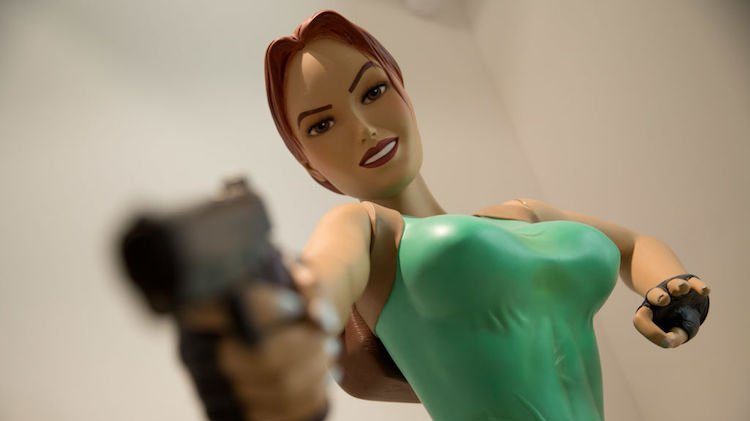Photo: Picture Alliance (Getty Images)
Lara Croft is a remarkable woman. She’s an adventurer and explorer. She’s also agile and athletic in addition to being extremely intelligent and beautiful.
First introduced to us by Sony’s Playstation 1 in 1996, Croft has become a worldwide icon thanks to her sex appeal and transformation to a relatable, size-appropriate character. From video games to movies, Croft has thankfully evolved these past 20-plus years, just like gamers have.
Role Model: Why Tomb Raider is an Important Milestone for Women in Gaming
In the wake of the latest Lara Croft video game installment, Shadow of the Tomb Raider, I’d like to celebrate how much she has accomplished. She has become a symbol of the female revolution and rise of equality. In today’s world of gaming, you need more than curves to sell $50 video games.
Many websites harp on how Lara Croft’s appearance has evolved. Yes, that is fact. In 1996, a male-heavy gaming audience may have been resistant to a playable, cunning female character unless she was easy on the eyes.
I get it. The female body is beautiful. The short shorts and tight top added to her appeal. The voice signals were sexy and suggestive (i.e. when she picked up a treasure she would make “grunting” sounds that would make Maria Sharapova blush). The appeal of playing this 64-bit gorgeous specimen with Barbie Doll proportions was huge. She became such a sex symbol that Hollywood chose the most beautiful woman in the world to portray her (Angelina Jolie) when they made the Tomb Raider movie.
But it wasn’t just Lara Croft’s figure that caught everyone’s attention. Ultimately, it was Lara’s story that led to the success of the Tomb Raider franchise. She was unattainable, unrealistic, and untouchable. The game was filled with linear exploration, but Lara took us around the globe, through unexplored caves, and death-defying adventures. She set the bar high and revolutionized gaming more than she takes credit for.
As time progressed, and feminism came to the forefront of the gaming world, sensitivity to the Tomb Raider’s form started to shape up. Fast-forward to 2013 when the reboot was released. The narrative was much heavier, her voice was less seductive, and a younger, more sensitive, and realer Lara Croft came into play.
Also, the graphics have far improved and though they had the ability to give her her booty shorts and tight tank tops in a much more realistic and sexual way, they instead chose khaki pants for a rugged Lara look. To see a character as a human being rather than a provocative explorer was a huge hit and people loved it. Smart move.
Girl Power: Women Over 25 are YouTube’s Fastest Growing Gaming Audience
Today’s Lara is set for the women’s revolution. She’s more vulnerable yet oddly stronger for it. No longer do we pause to check out her cleavage. Instead, we are entertained by her actual story, where she came from, and why she does what she does. She’s turned from a one-dimensional sexy, intangible character to a much more relatable personality.
Gamers engage with her because we want to adventure with her and we want to hear her story, not just so we can go for a ride and catch some appealing views along the way.
This new appeal is reflected in the movie versions of Lara Croft. The 2001 film Lara Croft: Tomb Raider and 2018’s Tomb Raider have such a different feel. We have feminist women in the real world to thank for that.
Today’s Lara Croft is tangible, sensitive, and emotional, so much so that her physical attributes are no longer the main focus. Rather than, “Oh, she’s hot,” we hear: “What a great game.”
Lara Croft isn’t a success because of her looks; she’s a success because of her adventures. Yet some still fail to notice the reason why she’s a gaming icon. In fact, I remember when the first teaser of the latest film came out and there was backlash against Alicia Vikander’s portrayal of Lara because of her breast size.
To all the haters that fail to be moved by such a badass character because her boobs don’t match some unrealistic ideal: sorry, not sorry. You’re missing out on the depth of the gameplay, the narratives of her story, and the growth of her character from a desensitized heroine to a vulnerable woman. For me, she’s become more real than ever.
What’s your take on Tomb Raider through her evolution? Do you still love her as much as before? More? Sound off below and find me on Twitter, Facebook and Instagram @Kaorious to discuss more!





